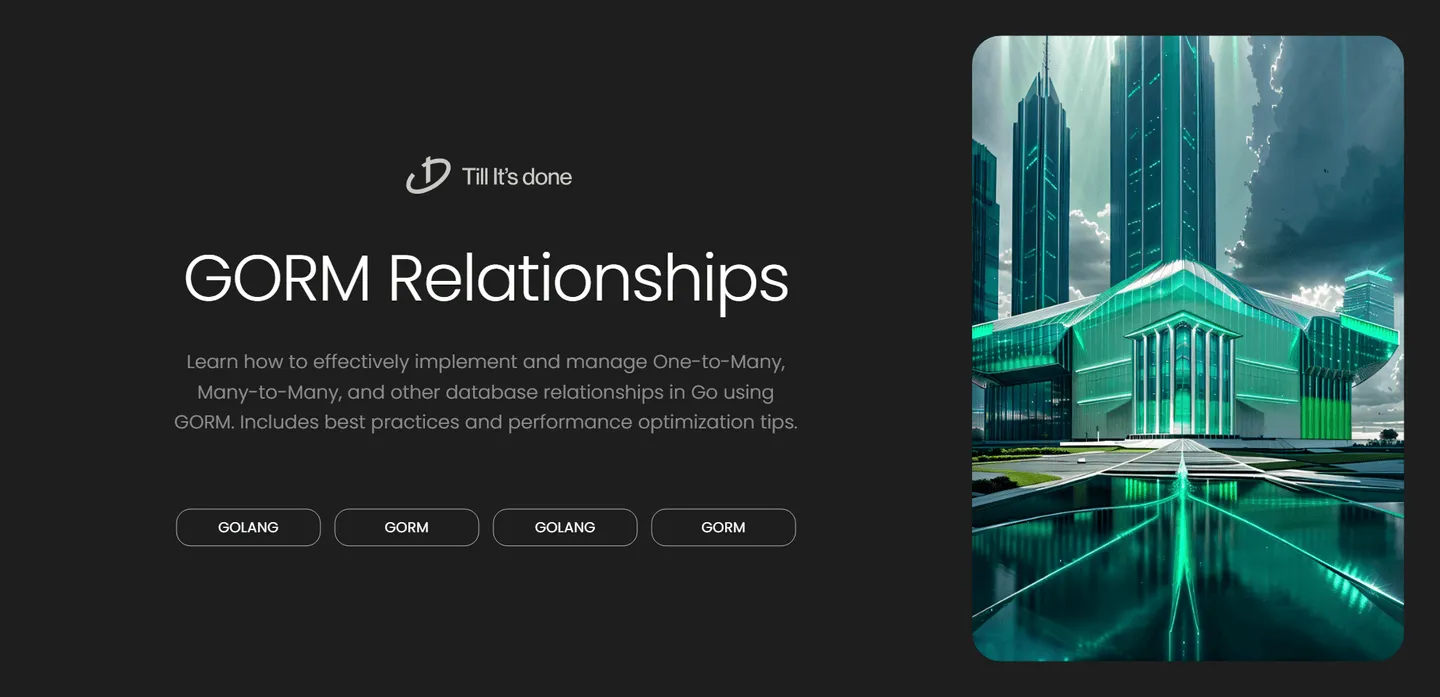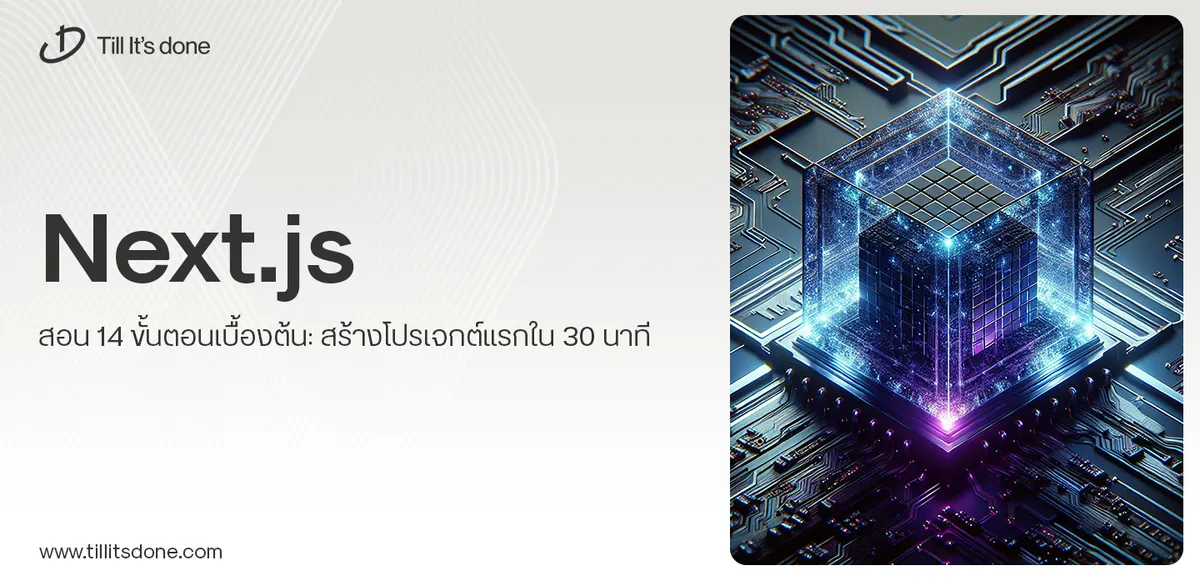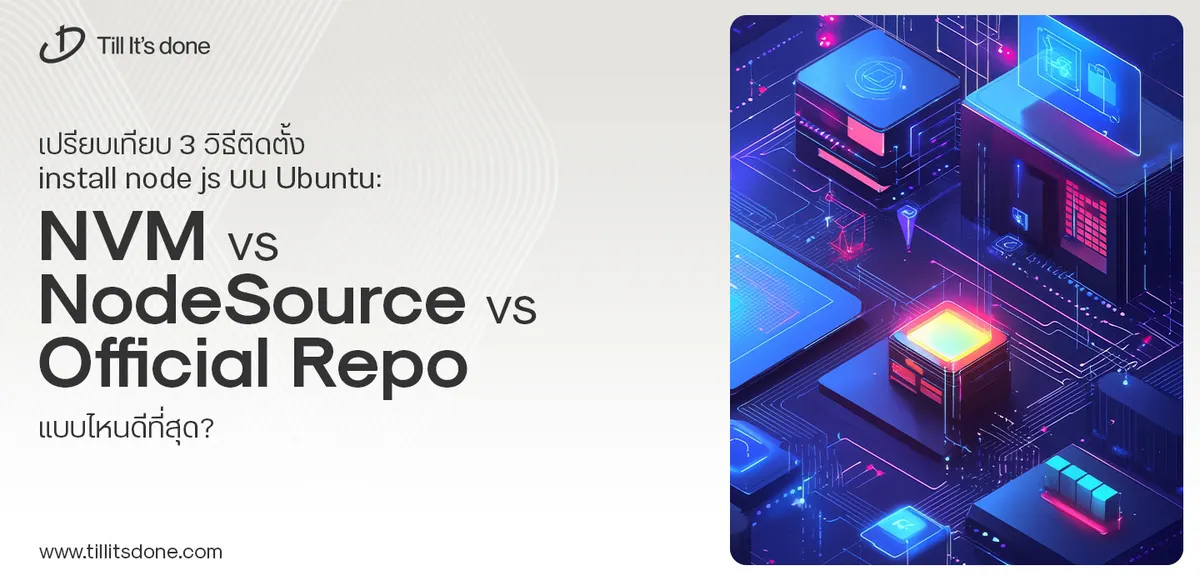- Services
- Case Studies
- Technologies
- NextJs development
- Flutter development
- NodeJs development
- ReactJs development
- About
- Contact
- Tools
- Blogs
- FAQ
Managing Database Relationships in GORM Guide
Includes best practices and performance optimization tips.

Managing Database Relationships in GORM: One-to-Many, Many-to-Many, and More

When building applications with Go, managing database relationships effectively is crucial for maintaining clean and efficient data structures. GORM, the fantastic ORM library for Golang, makes this task much more manageable with its intuitive API and powerful relationship handling capabilities. Let’s dive into how we can implement various types of relationships in GORM and explore some best practices along the way.
Understanding Basic Relationships
Before we jump into the implementation details, it’s essential to understand the primary types of relationships we’ll be working with:
- One-to-Many: A single record in one table is related to multiple records in another table (like a user having multiple posts)
- Many-to-Many: Records in both tables can have multiple relationships with each other (like students and courses)
- One-to-One: A record in one table is related to exactly one record in another table (like a user and their profile)

Implementing One-to-Many Relationships
Let’s start with a common example: a blog where users can create multiple posts. Here’s how we can structure this relationship in GORM:
type User struct { gorm.Model Name string Posts []Post // One-to-Many relationship}
type Post struct { gorm.Model Title string Content string UserID uint // Foreign key User User // Belongs to relationship}The magic happens through GORM’s automatic foreign key detection. When you define a slice of related models and a corresponding foreign key in the related model, GORM automatically handles the relationship for you.
Working with Many-to-Many Relationships
Many-to-Many relationships are slightly more complex as they require a join table. Let’s look at a practical example with students and courses:
type Student struct { gorm.Model Name string Courses []Course `gorm:"many2many:student_courses"`}
type Course struct { gorm.Model Name string Students []Student `gorm:"many2many:student_courses"`}
Best Practices and Advanced Features
When working with relationships in GORM, keep these tips in mind:
- Always use proper indexes on foreign key columns
- Consider using eager loading with Preload() for better performance
- Implement soft deletes when necessary to maintain data integrity
- Use transactions for operations that affect multiple related records
Here’s an example of efficient querying with relationships:
var user User// Eager loading of postsdb.Preload("Posts").First(&user)
// Nested preloadingdb.Preload("Posts.Comments").First(&user)Handling Relationship Callbacks
GORM provides powerful callbacks that you can use to handle related data operations:
func (u *User) AfterDelete(tx *gorm.DB) error { // Clean up related posts when a user is deleted return tx.Delete(&Post{}, "user_id = ?", u.ID).Error}Performance Considerations
When dealing with relationships, especially in large applications, consider these performance optimization techniques:
- Use batch operations for bulk updates
- Implement pagination for large datasets
- Create composite indexes for frequently queried relationships
- Use database constraints to maintain data integrity

 สร้างเว็บไซต์ 1 เว็บ ต้องใช้งบเท่าไหร่? เจาะลึกทุกองค์ประกอบ website development cost อยากสร้างเว็บไซต์แต่ไม่มั่นใจในเรื่องของงบประมาณ อ่านสรุปเจาะลึกตั้งแต่ดีไซน์, ฟังก์ชัน และการดูแล พร้อมตัวอย่างงบจริงจาก Till it’s done ที่แผนชัด งบไม่บานปลายแน่นอน
สร้างเว็บไซต์ 1 เว็บ ต้องใช้งบเท่าไหร่? เจาะลึกทุกองค์ประกอบ website development cost อยากสร้างเว็บไซต์แต่ไม่มั่นใจในเรื่องของงบประมาณ อ่านสรุปเจาะลึกตั้งแต่ดีไซน์, ฟังก์ชัน และการดูแล พร้อมตัวอย่างงบจริงจาก Till it’s done ที่แผนชัด งบไม่บานปลายแน่นอน  Next.js สอน 14 ขั้นตอนเบื้องต้น: สร้างโปรเจกต์แรกใน 30 นาที เริ่มต้นกับ Next.js ใน 14 ขั้นตอนเพียงแค่ 30 นาที พร้อม SSR/SSG และ API Routes ด้วยตัวอย่างโค้ดง่าย ๆ อ่านต่อเพื่อสร้างโปรเจ็กต์แรกได้ทันทีที่นี่
Next.js สอน 14 ขั้นตอนเบื้องต้น: สร้างโปรเจกต์แรกใน 30 นาที เริ่มต้นกับ Next.js ใน 14 ขั้นตอนเพียงแค่ 30 นาที พร้อม SSR/SSG และ API Routes ด้วยตัวอย่างโค้ดง่าย ๆ อ่านต่อเพื่อสร้างโปรเจ็กต์แรกได้ทันทีที่นี่  วิธีสมัคร Apple Developer Account เพื่อนำแอปขึ้น App Store ทีละขั้นตอน อยากปล่อยแอปบน App Store ระดับโลก มาอ่านคู่มือสมัคร Apple Developer Account พร้อมเคล็ดลับ TestFlight และวิธีอัปโหลดที่ง่ายในบทความเดียวนี้ได้เลย
วิธีสมัคร Apple Developer Account เพื่อนำแอปขึ้น App Store ทีละขั้นตอน อยากปล่อยแอปบน App Store ระดับโลก มาอ่านคู่มือสมัคร Apple Developer Account พร้อมเคล็ดลับ TestFlight และวิธีอัปโหลดที่ง่ายในบทความเดียวนี้ได้เลย  TypeScript Interface คืออะไร? อธิบายพร้อมวิธีใช้และข้อแตกต่างจาก Type เรียนรู้วิธีใช้ TypeScript Interface เพื่อสร้างโครงสร้างข้อมูลที่ปลอดภัยและเข้าใจง่าย พร้อมเปรียบเทียบข้อดีข้อแตกต่างกับ Type ที่คุณต้องรู้ ถูกรวมเอาไว้ในบทความนี้แล้ว
TypeScript Interface คืออะไร? อธิบายพร้อมวิธีใช้และข้อแตกต่างจาก Type เรียนรู้วิธีใช้ TypeScript Interface เพื่อสร้างโครงสร้างข้อมูลที่ปลอดภัยและเข้าใจง่าย พร้อมเปรียบเทียบข้อดีข้อแตกต่างกับ Type ที่คุณต้องรู้ ถูกรวมเอาไว้ในบทความนี้แล้ว  Material-UI (MUI) คืออะไร อยากสร้าง UI สวยงามและเป็นมืออาชีพในเวลาอันรวดเร็วใช่ไหม มาทำความรู้จักกับ Material-UI (MUI) ที่ช่วยให้คุณพัฒนาแอปพลิเคชันบน React ได้ง่ายและดูดีในทุกอุปกรณ์
Material-UI (MUI) คืออะไร อยากสร้าง UI สวยงามและเป็นมืออาชีพในเวลาอันรวดเร็วใช่ไหม มาทำความรู้จักกับ Material-UI (MUI) ที่ช่วยให้คุณพัฒนาแอปพลิเคชันบน React ได้ง่ายและดูดีในทุกอุปกรณ์  เปรียบเทียบ 3 วิธีติดตั้ง install node js บน Ubuntu: NVM vs NodeSource vs Official Repo แบบไหนดีที่สุด? เรียนรู้วิธีติดตั้ง Node.js บน Ubuntu ด้วย NVM, NodeSource หรือ Official Repo เลือกวิธีที่เหมาะกับความต้องการของคุณ พร้อมเปรียบเทียบ เพื่อการพัฒนาที่มีประสิทธิภาพ!
เปรียบเทียบ 3 วิธีติดตั้ง install node js บน Ubuntu: NVM vs NodeSource vs Official Repo แบบไหนดีที่สุด? เรียนรู้วิธีติดตั้ง Node.js บน Ubuntu ด้วย NVM, NodeSource หรือ Official Repo เลือกวิธีที่เหมาะกับความต้องการของคุณ พร้อมเปรียบเทียบ เพื่อการพัฒนาที่มีประสิทธิภาพ! Talk with CEO
We'll be right here with you every step of the way.
We'll be here, prepared to commence this promising collaboration.
Whether you're curious about features, warranties, or shopping policies, we provide comprehensive answers to assist you.


